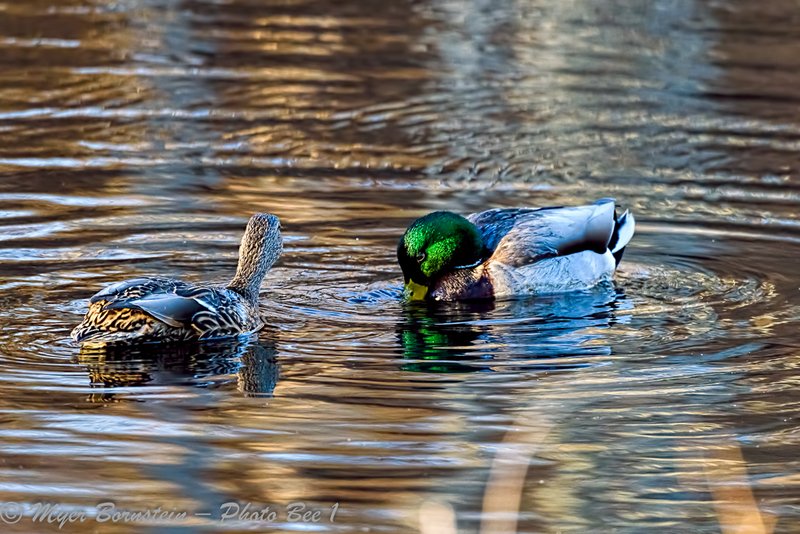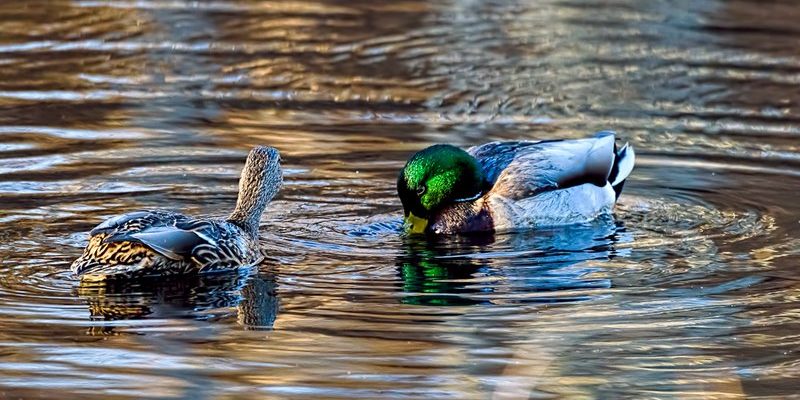
Mallards are well-known not just for their striking coloring, with the males sporting that iridescent green head, but also for their fascinating social behaviors. Courtship is a season filled with excitement—a time when these ducks strut their stuff to attract a partner. If you’ve ever watched a mallard pair, you might’ve noticed how their interactions tell a story through sounds and movements. So, let’s dive into the world of the mallard’s love life, exploring the varied courtship and mating rituals that make these birds so special.
The Courtship Dance
Courtship in mallards is nothing short of a performance. Males are known for their flashy displays, often performing a series of elaborate movements to woo a female. This includes head bobbing, which you’ll see when the male raises his head and dips it in a rhythmic motion. It’s like a dance-off where they have to show who’s the best!
The male mallard also engages in what’s called the “flap flight.” Here’s the thing: he takes off into the air, showcasing his beautiful plumage and making a noisy splash upon landing. Honestly, it’s meant to impress the female and demonstrate his health and vigor. This combination of movement and visual display makes the male mallard hard to resist.
Additionally, vocalizations play a key role in their courtship. The male will quack loudly while prancing around the female, using a variety of sounds to express his interest. You might think of it as a romantic serenade—though not quite what you’d hear at a candlelit dinner.
Nesting Environment and Choices
Once a female has chosen a male, they’ll begin to look for a suitable nesting site. Mallards typically prefer locations that are close to water but also provide cover. Think of it like choosing the perfect spot for a cozy picnic, where they have all the essentials—food, safety, and privacy.
The female will often select a dense vegetation area, like reeds or grass, where she can create a nest that’s both hidden and comfortable. It’s a serious choice, as this spot will be home to their future ducklings. Mallards are known to nest in locations like marshes or the edges of lakes, which provides both safety and easy access to food.
After she’s picked the perfect spot, the female will create her nest by gathering grass, down feathers, and other plant materials. This material is crucial because it insulates the eggs and keeps them warm. Imagine building a little cocoon that ensures the babies have everything they need to thrive during their early days.
Egg Laying and Incubation
Once the nest is ready, it’s time for one of the most critical stages: egg laying. A female mallard typically lays anywhere from 8 to 13 eggs during a single breeding season. Here’s the thing—she doesn’t lay them all at once; she spreads the process out over several days. This staggered approach ensures that she can properly incubate each egg and keeps them safe.
Incubation lasts about 28 days, during which the female will sit on the eggs. While she’s doing this, her male partner stays close, keeping watch for any threats. You could say he’s the protector of the nest, making sure that she and their future ducklings are safe.
During this time, it’s fascinating to see how the female shifts between being active and resting. She’ll take short breaks to feed and drink, but her primary focus is on keeping those eggs warm. It’s a labor of love, and her dedication during this period is crucial for the survival of their young.
Chick Development and Parenting
After nearly a month of incubation, the ducklings finally break free from their shells. This moment is nothing short of magical! The female mallard leads her little ones to water almost immediately after they hatch. It’s like she’s saying, “Alright, kiddos, it’s time to explore the big world!”
The ducklings are precocial, which means they’re relatively mature and mobile shortly after hatching. They’re covered in soft down feathers, allowing them to be warm and protected. You might find it surprising, but they can swim and find food almost right away.
In the days that follow, the female takes on the role of both a caregiver and protector. She teaches them how to forage for food, which typically consists of aquatic plants, insects, and small fish. Honestly, it’s an adorable sight watching her guide them through the water, quacking all the while.
Seasonal Changes and Mating Behavior
Mating rituals and behaviors can vary based on the season. During spring, when the weather warms up, mallards become particularly active in their courtship displays. You might notice more males showing off, parading around the females, and engaging in more vocalizations than usual.
The presence of warmer weather also signals to the female that it’s time to find a mate and prepare for nesting. She’ll often assess the males’ displays and engage in a sort of “evaluation process.” Maybe you could think of her as a judge at a talent show, picking the best performer to partner with.
As summer approaches, the urgency of courtship and nesting fades. By this time, the chicks are growing and learning to fend for themselves. It’s fascinating how the seasonal cycle impacts their behavior and rituals, shaping their interactions throughout the year.
Courting and mating among mallards is a remarkable spectacle filled with fascinating behaviors and deep connections. From the male’s flamboyant displays to the female’s careful nesting choices, these rituals are essential for their survival as a species. It’s like watching a heartwarming love story unfold right outside your window.
The mallard’s life isn’t just about romance; it highlights nature’s intricate dance of survival, parenting, and adaptability. The next time you spot a mallard couple, take a moment to appreciate the effort and beauty that goes into their courtship and nesting rituals. After all, it’s not just about finding love; it’s about creating a family and ensuring their little ones thrive in the world.

